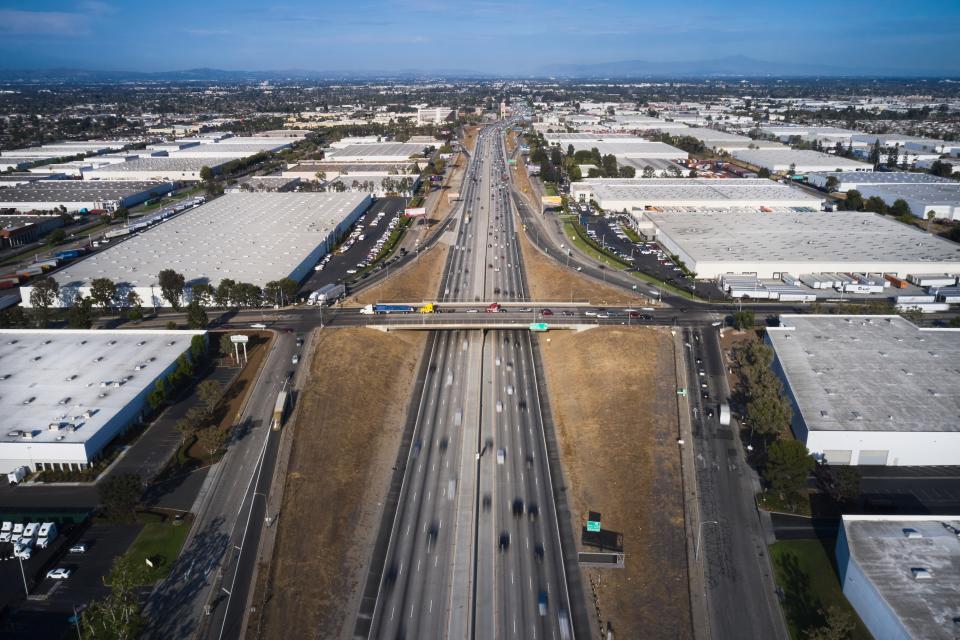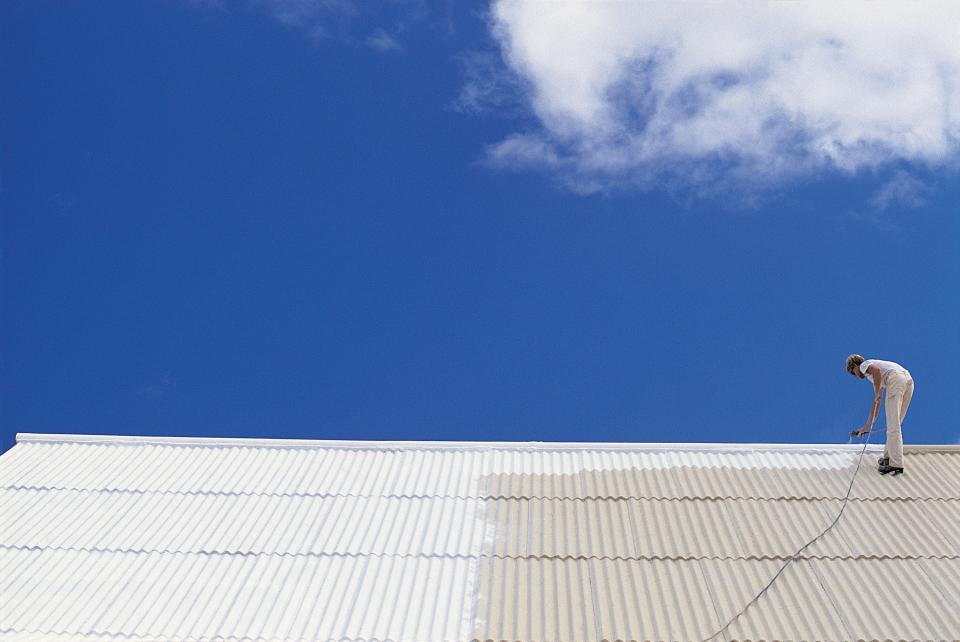Space Umbrellas, Ultra-White Paint, and More Shocking Ideas That Could Actually Help Save the Earth From Climate Change

The Intergovernmental Panel on Climate Change (IPCC) recommends keeping the global average temperature increase well below 2 degrees Celsius, if not below 1.5 degrees Celsius, by 2100 to avoid the worst effects of climate change. This requires achieving carbon neutrality by midcentury. But as temperatures continue to rise, already occasionally spiking above the 1.5-degree limit, the worst effects of climate change seem inevitable. Citing the 2030s as a critical deadline, many governments, corporations, and individuals are pouring resources into regulatory frameworks and innovative solutions that could neutralize if not reduce the possibility of surpassing the 1.5-degree threshold. Below are a few of the more outlandish sounding technologies that can actually help delay some of the worst effects of climate change.

Solar Radiation Modification Technology: A Giant Sunshield

New Mexico Scenics
Where regulatory frameworks end, innovation begins. And there are few things more innovative than a huge space umbrella acting as a secondary barrier between us and our star. Solar radiation modification (SRM) technology refers to engineering that reflects the sun’s rays back into space to potentially mitigate the impacts of our warming planet due to human-caused climate change. SRM technology is not new. Forms of it, such as space-based reflectors, stratospheric aerosol injection, cirrus cloud thinning (CCT), and marine cloud brightening have been researched for more than a decade. But recently, SRMs are gaining popularity due to the increasing effects of a rapidly warming planet. And there is one group of scientists led by Yoram Rozen, a physics professor and the director of the Asher Space Research Institute at Technion-Israel Institute of Technology in collaboration with the National Centre for Space and Science in the United Arab Emirates and the Imagesat International, that claim to be ready to actually build a prototype SRM or sunshield. Describing the SRM as a satellite, these scientists claim that it will be developed to control and reduce the amount of solar energy that reaches the earth from the sun, thereby reducing global warming by up to one and a half degrees per year.
Risk Factors
This technology is not without concerns, however. According to the authors of a research paper published in Earth System Dynamics, deploying SRMs comes with the risk of unknown multi-century impacts of deployment, which could present multi-generational commitments of costs, risks, and negative side effects. Additionally, in a 2022 report, the Global Commission on Governing Risks from Climate Overshoot (the "Climate Overshoot Commission") says that the most concerning side effects include changes in regional weather patterns, precipitation, or ocean currents, which may have negative impacts on ecosystems and agriculture. “SRM would counter climate change imperfectly and poses serious uncertainties, risks, and governance challenges,” the researchers note. And according to a 2023 report published by the United Nations Environment Programme (UNEP), researchers caution that “while the scientific literature shows that SRM, and stratospheric aerosol injection specifically, can cool the globe, there is a dearth of data on the risks and impacts. For technologies that can alter the chemistry of the stratosphere, the world needs much more information to support decision-making.”
Geological Carbon Capture
In a 2020 study detailing options for negative carbon emissions in California, researchers including Jennifer Wilcox, principal deputy assistant secretary for the Office of Fossil Energy and Carbon Management, Department of Energy, highlight the efficacy of geologic storage of captured CO2. This process is not new. In fact, the most mature storage technique is sequestration in deep saline aquifers. However, the geologic sequestration technique detailed in this study is additive. California’s deep sedimentary rock formations in the Central Valley represent world-class CO2 storage sites. According to the MIT Technology Review, this sedimentary rock includes trace amounts of asbestos, chrysotile, a serpentine mineral laced throughout the mountain (serpentine is California’s state rock). The reaction with carbon dioxide mainly produces magnesium carbonate minerals like magnesite, a stable material that could lock away the greenhouse gas for millennia. These types of minerals are widely used in heat-resistant building materials, as they are particularly good at grabbing hold of the carbon dioxide molecules dissolved in rainwater or floating through the air and storing them away.
The process is relatively straightforward. It involves first capturing CO2 from the air, absorbing it into a solvent or into a solid sorbent material, then releasing the captured CO2 to eventually store it. The first step of the direct air capture process is to absorb CO2 into a solvent or adsorb CO2 onto a solid sorbent material. The second step is to release the CO2 from the capture agent to produce a high-purity stream of CO2 for geologic storage. “Although land use is a significant concern for some versions of the technology, geothermal and natural-gas-based facilities are compact and effective,” the researchers note. The existing and potential geothermal energy in California could power as much as 5 million tons of direct air capture from using existing geothermal energy now used to generate electricity.
“It is more expensive than most negative-emissions options for California but has a nearly unlimited technical capacity,” the report notes. “We estimate the near-term costs of direct air capture to be roughly $266 per ton CO2 removed for sorbent-based, geothermal plants and $230 per ton CO2 removed for solvent-based natural gas plants. These costs will come down by around 20 to 30% in the near future as new generations of plants are built and improved.” Additionally, research gaps remain in the area of carbon mineralization process improvement overall. Despite these challenges, researchers hope that this early work allows them to figure out how to effectively and affordably draw down vast amounts of greenhouse gas from the atmosphere.
Ultra-White Paint

“I don't think any [single] solution will solve the problem,” says Xiangyu Li, assistant professor at the Tickle College of Engineering at the University of Tennessee. But Li along with a team of researchers led by Xiulin Ruan, professor of engineering at Purdue, are developing one solution to add to the growing list of climate change mitigation technologies in recent years. Addressing the urban heat island effect, Li and team have created an ultra-white paint that is meant to reflect enough of the sun’s UV waves to cool the building rooftops it coats. Studies have shown that by covering a building in the researchers’ white paint, its surface can be cooled eight degrees than the air temperature by day, and 19 degrees cooler by night. Such paint would thereby enable that building to use up to 40% less air-conditioning to achieve the same internal temperature. “Our goal is really to try to reflect as much sunlight as possible so that you can actually feel the cooling mechanism working,” says Li of the paint. “If you compare it to regular paint that absorbs about 10% of the sunlight, we are possibly rejecting almost as much.” On a steadily warming planet, any mitigation of heat absorption helps.

Man Painting Roof
Photo: Getty Images/Keith BrofskyAnother beneficial feature of this technology is that this kind of cooling does not require electrical energy. Thermal wavelengths on Earth transfer from the planet through the atmosphere into deep space and do not return. So essentially, “deep space is extracting energy for us,” says Li. This paint has the potential to create energy savings for building owners and inhabitants due to the fact that it reduces the amount of electricity used by HVAC systems. “If we can at least deal with some of the building heat gain, that will address more than half of the electricity used by your HVAC system since, depending on your location, that amount just comes from the sun. It’s not like we are producing much heat. The sun is just heating up the building,” says Li.
Addressing the critiques of this technology, Li points to the fact that the paint has not yet gone to market, as the search for partners is ongoing and dependent upon multiple factors, including confidence in the performance of the pigment over time. “Interacting with industry companies is always a challenge. Because when we are doing research in the lab, what we care most [about] is [to] make the full performance as good as possible,” says Li. “Moving this to actually a commercial product that people can comfortably put on the roof for 20 years without issues, without cracking, I think that's another challenge in itself,” Li explains. Another consideration is that certain locations don’t receive as much sunlight as others. So places like Buffalo, Minnesota, Alaska, for example, probably will not have much use for this paint year-round due to lower solar reflectance. But Li notes that “even if you’re in a relatively colder climate, still you will get overall benefits—you will likely still get very good performance out of this.”

People planting a tree in park
Photo: Getty ImagesOf course, there is no perfect singular solution. If we are to mitigate the impacts of a heating planet, multiple solutions are needed to support this desired outcome. “If you plant more trees, that will help with the urban heat island,” says Li. “Or if you can just replace your roof with a lighter color. That helps as well.” While these ideas may help slow the warming of our planet, the top priority is obvious: significantly reducing the amounts of greenhouse emissions while transitioning to clean, renewable energy.
Originally Appeared on Architectural Digest

